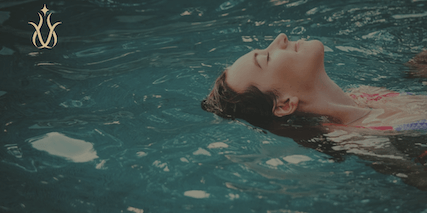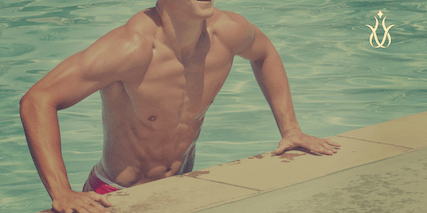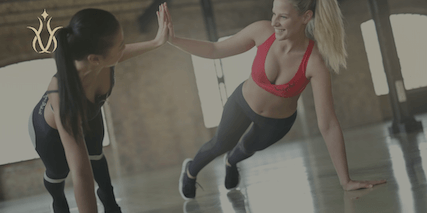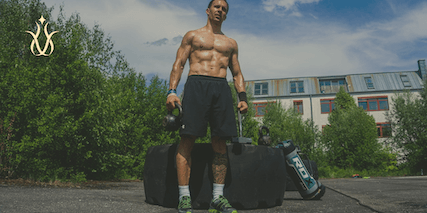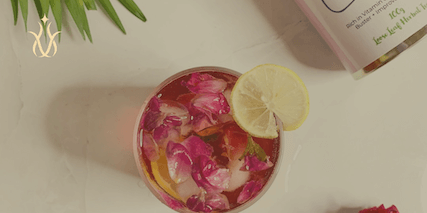Relaxation techniques for rejuvenation offer a soothing escape from the stresses of daily life, allowing you to replenish your energy and restore a sense of calm. From deep breathing exercises to guided imagery and progressive muscle relaxation, these techniques promote physical and mental rejuvenation. By engaging in practices such as meditation, yoga, aromatherapy, and mindfulness, you can unlock the power of many relaxation techniques and experience a renewed sense of vitality. Discover the transformative benefits of these relaxation techniques as you embark on a journey towards inner peace, rejuvenation, and overall well-being.
Introduction to Relaxation Techniques
Relaxation techniques are mind-body exercises designed to bring calm and tranquillity. They have been scientifically proven to lower blood pressure, slow breathing and heart rate, reduce tension and ultimately bring about a sense of peace and well-being. Relaxation techniques vary greatly, ranging from deep breathing exercises to guided imagery, yoga, meditation, and more.
Rejuvenation is the process of making you feel and look more youthful. You see, our bodies react to stress by activating the ‘fight or flight’ response, releasing hormones such as cortisol and adrenaline. While this response is crucial for survival in dangerous situations, chronic activation of this system due to ongoing stress can seriously affect our health.
Research shows that chronic stress accelerates aging by shortening our DNA telomeres, the protective caps at the end of our chromosomes. A study published in the ‘Proceedings of the National Academy of Sciences’ revealed that chronic stress could speed up the aging process by 9 to 17 additional years!
So, the question is, how do we combat chronic stress and its ageing effects? Relaxation techniques are the answer. By practising these techniques, we can engage our body’s ‘relaxation response, a state of deep rest that alters the physical and emotional responses to stress.
Understanding Stress and its Effect on Aging
When it comes to staying youthful and vibrant, understanding stress is key. We all know that stress doesn’t feel good, but have you ever wondered what exactly it does to your body? Let’s delve a bit deeper and explore the physiological response to stress.
Whenever we encounter a stress-related situation, our body activates a series of changes known as the ‘stress response’ or ‘fight-or-flight’ response. Essentially, our body’s survival mechanism prepares us to face danger or run away from it. During this response, our adrenal glands release hormones such as cortisol and adrenaline. These hormones cause our heart rate to increase, our breathing to become rapid and shallow, and our muscles to tense up. That’s the pounding heart, heavy breathing, and jittery feeling we associate with stress.
Now, this reaction is perfectly natural and even beneficial when we face a threat. But it’s a different story when chronic stress persists over weeks or months. This is because chronic stress keeps our bodies in a constant state of alertness, causing wear and tear that speeds up the aging process.
Chronic stress affects our bodies at the cellular level. It shortens the telomeres, the protective caps on the end of our chromosomes. Shortened telomeres have been linked with various age-related conditions, including cardiovascular disease, diabetes, and even certain types of cancer.
A groundbreaking study by Dr Elizabeth Blackburn and her colleagues found a direct link between chronic stress and telomere shortening. They discovered that individuals experiencing high levels of life stress had significantly shorter telomeres than those with lower stress levels. This difference in telomere length was equivalent to at least one decade of additional aging for those under high stress.
So, the takeaway here is that chronic stress isn’t just a nuisance—it’s a serious factor in the aging process. So, let’s explore the myriad ways we can counteract this stress and its aging effects, thereby stepping onto the path of relaxation techniques for rejuvenation.
Deep Breathing Techniques: The Power of Every Breath You Take
Breathing is a vital part of our existence. Not only does it keep us alive, but how we breathe also profoundly impacts our well-being. For example, our breath can be a potent tool to ease stress, make us feel calm and make us less anxious. One of the most effective ways to do this is by using deep breathing techniques.
We’re not talking about your normal breathing here. It’s the kind of deep, slow breathing that fills your lungs and makes your belly rise. So, what’s the science behind it?
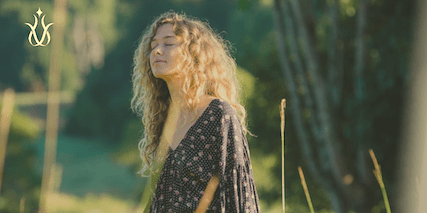
The Science Behind Deep Breathing
Deep breathing exercises have been shown to activate the body’s relaxation response, decreasing heart rate and blood pressure, thus promoting a state of calm and relaxation. This happens because deep breathing stimulates the vagus nerve, a part of our nervous system that governs our body’s rest-and-digest responses.
Moreover, studies have shown that deep breathing can alter the expression of genes involved in immune response, inflammation, and insulin secretion, suggesting that it can profoundly affect our overall health.
How to Practice Deep Breathing
Let’s get you started with a simple deep breathing technique:
Find a quiet place where you won’t be disturbed.
Sit comfortably and close your eyes.
Take a normal breath.
Then, take a deep breath, inhaling slowly through your nose. Let your chest and lower belly rise as you fill your lungs.
Exhale slowly through your mouth or nose, whichever feels more comfortable.
Continue breathing deeply for about five to ten minutes at a time.
Remember, it’s not about how many breaths you take in a minute but how deeply you breathe. So, focus on taking fewer, deeper breaths.
The Benefits of Deep Breathing
Research has highlighted the rejuvenating power of deep breathing techniques. For example, a study published in the Journal of Alternative and Complementary Medicine demonstrated that deep breathing exercises could help reduce symptoms of depression in a group of students.
Moreover, research conducted at Harvard Medical School found that deep relaxation and deep breathing techniques could switch on genes associated with disease-fighting, thus highlighting the potential for rejuvenation and enhancing overall health.
Don’t underestimate the power of your breath as a relaxation technique for rejuvenation. Take a deep breath, hold, exhale, and embrace the rejuvenating power of deep breathing.
Progressive Muscle Relaxation: Your Pathway to Unwind and Rejuvenate
In our quest for rejuvenation, paying attention to our muscles is crucial. Why? Because chronic tension in our muscles can lead to a plethora of unwanted effects, including stress, fatigue, and even premature aging. Fortunately, Progressive Muscle Relaxation (PMR) can be our ally in this quest, helping us ease tension and feel more relaxed.
Understanding Progressive Muscle Relaxation (PMR)
PMR is a technique that helps you relax by tensing and then releasing different muscle groups in your body. The theory behind it is straightforward: it’s hard for muscles to be tense and relaxed simultaneously. So by intentionally tensing your muscles before relaxing them, you allow them to relax more deeply.
It’s a technique developed by American physician Edmund Jacobson in the 1920s, and it’s since become a well-established method for reducing stress and anxiety, improving sleep quality, and even alleviating physical pain.
How to Practice Progressive Muscle Relaxation
Here’s a simple PMR exercise you can try:
First, find a comfortable and quiet place to sit or lie down.
Then, close your eyes and take a few deep, slow breaths.
Start with your feet. Tense the muscles in your toes for about five seconds and then relax for 30 seconds. Notice the contrast between muscle tension and relaxation.
Move upwards to your calves, thighs, buttocks, stomach, chest, arms, hands, neck, face, and finally, your head. Repeat the process of tensing for five seconds and relaxing for 30 seconds.
Once you’ve gone through all the muscle groups, take some time to enjoy the feeling of relaxation.
Don’t worry if you fall asleep during the exercise—it’s a good sign you feel relaxed!
Research on PMR’s as a Relaxation Technique for Rejuvenation Benefits
The benefits of PMR are more than just anecdotal. Numerous scientific studies validate its effectiveness. For instance, research published in the International Journal of Nursing Studies found that PMR improved sleep quality among older adults, a crucial component of rejuvenation. Another study in the Journal of Clinical Nursing found PMR effective in reducing stress among healthcare workers.
Moreover, a 2020 study published in the Complementary Therapies in Clinical Practice journal showed that PMR significantly reduced anxiety and improved the quality of life in women undergoing radiation therapy for breast cancer, thus demonstrating its potential for improving overall well-being.
So, if you’re looking for a simple yet effective relaxation technique that not only combats stress but also rejuvenates your mind and body, give Progressive Muscle Relaxation a go. It’s an effortless path to a more relaxed and youthful you.
Guided Imagery: A Picture-Perfect Route to Relaxation and Rejuvenation
Harnessing the power of the mind can significantly impact our well-being and rejuvenation journey. One technique that does this remarkably well is guided imagery, a form of focused relaxation that involves all your senses to help your body relax and heal.
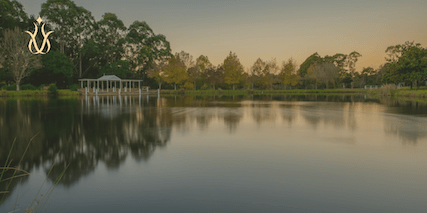
What is Guided Imagery?
Guided imagery, also known as visualisation, works on the concept that the body and mind are connected. It involves creating calming and peaceful images in your mind – a personal sanctuary that allows your mind and body to relax. Think of it as a guided meditation where you visualise a peaceful scenario or setting using all your senses.
But it’s not just about relaxation. The beauty of guided imagery is that it can take you on a mental journey, empowering you to confront your fears, overcome hurdles, and achieve your goals.
Your Guide to Practicing Guided Imagery:
Ready to embark on your guided imagery journey? Here’s a step-by-step process to help you:
First, find a quiet and comfortable place where you won’t be disturbed.
Then, close your eyes and take a few deep breaths.
Envision a place or situation that is calming and peaceful to you. It could be a serene beach, a lush forest, or even a cosy nook in your childhood home.
Now, engage all your senses. What do you see? Can you hear the sounds? What does this place smell like? Can you taste or touch anything?
Stay peaceful for several minutes, soaking up the tranquillity and calm.
When you’re ready, bring your focus back to your surroundings and gently open your eyes.
Don’t worry if your mind wanders during the process. It’s natural. Gently bring your focus back to your peaceful place.
The Science Behind Guided Imagery
Guided imagery is about more than just feeling good. There’s solid scientific evidence that backs up its effectiveness. Studies have shown that guided imagery can help reduce stress, improve sleep, decrease pain, and even boost your immune system – all key factors in rejuvenation.
A review of research in the Journal of Environmental and Public Health noted that guided imagery has “promising effects” on psychological stress and the immune system. Similarly, a Journal of Consulting and Clinical Psychology study found that guided imagery could reduce stress and anxiety among patients undergoing surgery.
In summary, guided imagery is a valuable tool in our relaxation for rejuvenation arsenal. It’s a technique that helps us unwind and fosters a greater connection with ourselves. So, try it and visualise your way to a rejuvenated, more vibrant you.
Yoga and Meditation: Ancient Practices for Modern Rejuvenation
Age-old yet remarkably relevant, yoga and meditation offer a time-tested path to relaxation, rejuvenation, and overall wellness. They encapsulate a holistic approach to health, uniting the body, mind, and spirit. So let’s delve deeper into these practices and how they can enhance your rejuvenation journey.
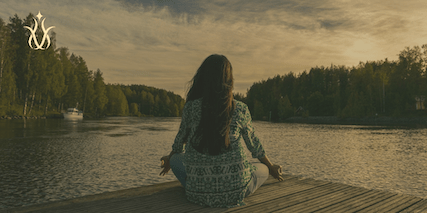
What are Yoga and Meditation?
Yoga is an ancient practice that originated in India over 5,000 years ago. It incorporates physical postures (asanas), breath control (pranayama), and meditation to promote physical strength, mental clarity, and spiritual growth.
On the other hand, meditation, a key component of yoga, is a mental exercise that cultivates mindfulness and awareness. It involves focusing the mind on a particular object, thought, or activity to train attention and body awareness and achieve a mentally clear and emotionally calm state.
The Rejuvenating Benefits of Yoga and Meditation
Practising yoga and meditation can offer a wealth of benefits, notably promoting relaxation and rejuvenation.
Yoga enhances flexibility, strength, and balance, improves posture and bone health, boosts circulation, and supports cardiovascular health. In addition, it aids digestion, bolsters the immune system, and promotes healthier sleep patterns – key ingredients in the rejuvenation recipe.
As for meditation, it sharpens the mind, reduces stress and anxiety, increases feelings of well-being and happiness, and can even slow the aging process. Increasing mindfulness allows us to live more in the present moment, enhancing our quality of life.
Backed by Science: The Anti-Aging Effects of Yoga and Meditation
The beauty of yoga and meditation lies in their profound effects and the wealth of research validating their benefits.
A study published in the Journal of Alternative and Complementary Medicine found that consistent yoga and meditation practice could influence gene expression related to energy metabolism and telomere maintenance, potentially slowing the aging process at a cellular level.
Moreover, research published in Frontiers in Human Neuroscience reported that long-term yoga practitioners have more grey matter volume in several brain areas, particularly those related to mental clarity and emotional stability, compared to non-practitioners.
In conclusion, yoga and meditation offer powerful tools for relaxation and rejuvenation. Incorporating them into your daily routine can truly enrich your life, helping you stay young, vibrant, and resilient. So why not unroll that yoga mat, adopt a comfortable posture, and start your journey towards a more rejuvenated you today?
Tai Chi and Qigong: Oriental Wisdom for Enhanced Relaxation for Rejuvenation
Embarking on our exploration of rejuvenating relaxation techniques, let’s journey to the East and discover the profound wisdom of Tai Chi and Qigong. These ancient Chinese practices incorporate mindfulness, breath control, and gentle movements to harmonise body, mind, and spirit.
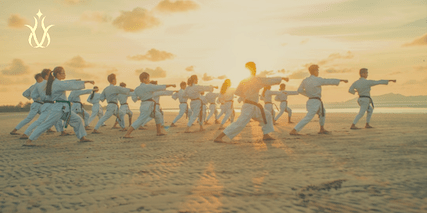
Unraveling Tai Chi and Qigong
Tai Chi, often described as “meditation in motion,” is a martial art designed for self-defence and health benefits. It involves performing a series of postures in a slow, graceful manner, each movement flowing seamlessly into the next.
Qigong is a holistic system of coordinated body movements, breathing, and meditation for health, spirituality, and martial arts training.
Both practices are based on traditional Chinese medicine principles and aim to cultivate and balance qi (pronounced “chi”), which is often translated as “life energy.”
The Benefits of Tai Chi and Qigong for Relaxation and Rejuvenation
Practising Tai Chi and Qigong can usher in a multitude of benefits for relaxation and rejuvenation. They improve flexibility and balance, enhance cardiovascular fitness, alleviate stress and anxiety, promote deep relaxation, and foster a sense of well-being.
Furthermore, these practices can enhance mental clarity and focus, improving your capacity for mindfulness. They can also help manage chronic conditions such as arthritis, heart disease, and hypertension, further contributing to rejuvenation.
Research Evidence: Validation of Tai Chi and Qigong’s Rejuvenating Potential
The wellness benefits of Tai Chi and Qigong are well-supported by scientific research. A meta-analysis published in the American Journal of Health Promotion found that Tai Chi significantly improved physical and mental health. It highlighted reductions in stress, anxiety, and depression, along with improved self-esteem.
Similarly, a comprehensive review in the Journal of Health and Social Behavior indicated that Qigong could increase vitality, positively impact the immune system, and improve metabolic equilibrium, which is critical for slowing the aging process.
These practices, steeped in centuries of wisdom, can be a powerful addition to your rejuvenation repertoire. Embracing Tai Chi and Qigong may help you sail towards a more relaxed, rejuvenated, and vibrant version of yourself. So why not step into this harmonious flow today?
Autogenic Training: An Unseen Path to Relaxation for Rejuvenation
As we continue our journey through effective relaxation techniques, let’s delve into a lesser-known but highly potent method known as autogenic training. It’s a technique that will empower you to access the relaxation response from within as a powerful tool in your quest for rejuvenation.
Unveiling Autogenic Training
Autogenic training is a mind-body intervention developed by German psychiatrist Johannes Schultz in the early 20th century. ‘Autogenic’ signifies ‘self-generated’ or ‘self-produced.’ The technique involves repeating specific phrases to yourself to bring about deep relaxation. It’s based on the premise that we all have inherent self-regulating mechanisms that can be activated with the right intent and focus.
Embracing Autogenic Training for Relaxation
Practising autogenic training is straightforward, but it requires consistency and patience. The process involves sitting or lying down comfortably, closing your eyes, and repeating a series of six standard formulas that focus on different bodily physical sensations, including heaviness and warmth in the limbs, a steady heartbeat, calm breathing, warmth in the abdomen, and a cool forehead.
Over time, as you master the technique, you can induce relaxation almost instantaneously just by repeating these phrases in your mind.
The Science Behind Autogenic Training and Rejuvenation
Now, let’s look at the evidence supporting the rejuvenating effects of autogenic training. A review published in the Applied Psychophysiology and Biofeedback journal revealed that autogenic training could effectively manage stress, anxiety, and insomnia. Additionally, it highlighted the technique’s positive impacts on cardiovascular health, pain management, and overall well-being.
Moreover, a study in the International Journal of Behavioral Medicine suggested that autogenic training could bolster the immune response, a crucial factor in the body’s natural rejuvenation process.
Although relatively less known, autogenic training offers a powerful and evidence-backed pathway to deep relaxation and rejuvenation. By harnessing your innate self-regulating ability, you can counteract stress and pave the way for a more youthful, energetic you. So why not give it a go? With practice, you might just unlock a hidden treasure within yourself.
Biofeedback: Listen to Your Body for Relaxation and Rejuvenation
Sometimes, the best answers come from within in our pursuit of relaxation and rejuvenation. That’s where biofeedback comes into play. It’s a technique that can make you more in tune with your body, enhancing your capacity to relax and rejuvenate.
What Exactly is Biofeedback?
Biofeedback is a technique where you’re trained to control specific bodily processes that typically occur automatically. These can include heart rate, blood pressure, muscle tension, skin temperature, and even brain waves. Using electronic sensors and equipment, biofeedback provides real-time insights into your body’s inner workings.
With this information, you can make subtle adjustments in your thoughts, emotions or physical state, reducing your stress level, alleviating pain, and achieving greater relaxation.
Employing Biofeedback for Relaxation
Biofeedback begins by attaching sensors to your body relaying information to a display monitor. Next, you’ll watch the monitor and, guided by a trained therapist, learn to interpret the signals. Over time, you’ll understand how to control these functions, even without the equipment, enhancing your ability to relax at will.
Research-backed Rejuvenation with Biofeedback
But what does science say about the rejuvenation benefits of biofeedback? First, a significant body of research stands as a testament to the potency of biofeedback in promoting relaxation and counteracting the effects of stress.
A study published in the ‘Applied Psychophysiology and Biofeedback journal found that biofeedback could effectively improve the symptoms of stress and anxiety, supporting overall well-being. Moreover, research in the ‘Journal of Psychosomatic Research’ found biofeedback to be effective in improving sleep quality, a vital element of rejuvenation.
Biofeedback has even shown promise in the realm of cognitive ageing. For example, a study in ‘Clinical Interventions in Aging’ highlighted its potential in enhancing cognitive functions among older adults, indicating its potential role in mental rejuvenation.
In a world that often feels ‘out of control’, biofeedback gives you the reins to your bodily functions, promoting a deep relaxation technique for rejuvenation. It’s a technique worth considering in your relaxation repertoire. By listening to the whispers of your body, you might just find the secret to staying young and vibrant.
Mindfulness and Mindful Eating: Savour the Moment, Savour Your Health
Don’t underestimate your mind’s power when it comes to relaxation and rejuvenation. You can transform your relationship with stress, food, and well-being through mindfulness and mindful eating.
Understanding Mindfulness
Mindfulness is about being fully present and engaged in the moment, paying attention to your thoughts, feelings, and physical sensations without judgement. This simple yet profound practice can anchor us in the present, reducing the stress and worry associated with dwelling on the past or anticipating the future.
Studies, such as one published in the ‘American Journal of Psychiatry’, have shown that mindfulness-based interventions can significantly reduce symptoms of stress, anxiety, and depression. Therefore, mindfulness has a crucial role in your relaxation journey.
Mindful Eating: Savour Your Food, Enhance Your Well-being
But how does mindfulness translate to the dining table? Mindful eating is about fully experiencing the process of eating. It involves paying attention to your food’s colours, smells, textures, and tastes. It’s about recognising your hunger and satiety cues and honouring them rather than eating out of habit or in response to emotional triggers.
The benefits of mindful eating are manifold. Apart from preventing overeating and promoting a healthier relationship with food, it can also enhance digestion, as a relaxed state is optimal for digestion and nutrient absorption. This is essential for rejuvenation and staying young.
The Science Supporting Mindfulness and Mindful Eating
Scientific research has indeed thrown its weight behind these practices. For example, one study published in ‘Psychosomatic Medicine’ found that mindfulness meditation can slow cellular ageing by reducing the impact of stress hormones.
Research specifically on mindful eating has been promising, too. For example, a review in ‘Current Obesity Reports’ concluded that conservative eating interventions could help improve eating behaviours and manage weight, critical elements of health and rejuvenation.
So, if you’re on a quest for relaxation and rejuvenation, remember to pause. Whether through a meditation practice or at the dinner table, being fully present in the moment can go a long way in promoting well-being and counteracting the toll of stress and ageing. Mindfulness and mindful eating are indeed nourishment for both body and mind.
Aromatherapy and Essential Oils: An Olfactory Route to Relaxation and Rejuvenation
Our sense of smell has a powerful connection with the brain, and aromatherapy taps into this link to promote relaxation and rejuvenation. But how exactly does it work? Let’s delve into the aromatic world of essential oils and discover their potent benefits.
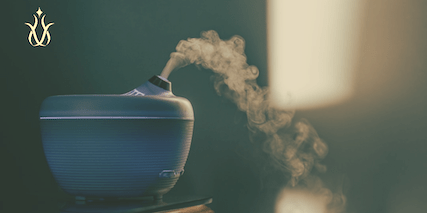
What is Aromatherapy?
Aromatherapy involves using essential oils, which are highly concentrated plant extracts. These oils are either inhaled or applied on the skin and are believed to stimulate brain function and promote whole-body healing. Aromatherapy is a natural and holistic approach to health and well-being, from stress management to rejuvenating the body.
Essential Oils for Rejuvenation
Different essential oils offer various health benefits. Some of the star players for relaxation and rejuvenation include:
Lavender: Highly regarded for its ability to create a calming effect, lavender is often used to combat anxiety, insomnia, and restlessness.
Peppermint: Known for its invigorating properties, peppermint can reduce fatigue and enhance mental alertness.
Frankincense: This oil is touted for its rejuvenating effects on the skin, helping to smooth wrinkles and improve skin tone.
Rose: To promote emotional well-being, rose oil can elevate mood and foster relaxation.
The Evidence Behind Aromatherapy
So, what does the science say about aromatherapy? A study published in the ‘European Journal of Preventive Cardiology’ found that aromatherapy significantly decreased participants’ heart rate and blood pressure, indicating its effectiveness for stress relief.
Meanwhile, research in the ‘Journal of Cosmetic Dermatology’ demonstrated that essential oils can promote skin rejuvenation. In particular, frankincense oil showed the potential to improve skin elasticity and reduce the appearance of wrinkles.
Music and Art Therapy: Harmonious Pathways to Relaxation for Rejuvenation
Music and art therapy are highly expressive forms of relaxation techniques for rejuvenation, both equally fascinating in their own right. By harnessing the power of creativity, these therapies offer incredible benefits for relaxation and rejuvenation.
What is Music and Art Therapy?
Music therapy involves using music to enhance physical, emotional, and mental well-being. It may include listening to music, playing an instrument, singing, or composing. On the other hand, art therapy uses visual and tactile creative activities such as drawing, painting, or sculpting to express and process emotions, reduce stress, and boost mental health.
How Do These Therapies Promote Relaxation?
You may notice your worries fading when you’re lost in a piece of music or engaged in creating art. This happens because these activities can help distract your mind from stressors, promote a state of mindfulness, and trigger the release of endorphins – the body’s natural “feel-good” hormones.
Music’s rhythm and melody can soothe your mind and body. It can slow your heart rate, lower blood pressure, and reduce levels of stress hormones. Similarly, creating art can act as non-verbal communication, allowing you to express and release deep-seated emotions, leading to relaxation and peace.
What Does Research Say?
A substantial body of evidence supports the benefits of music and art therapy. For example, a study published in the ‘Journal of Music Therapy’ reported that music therapy effectively reduced anxiety and promoted relaxation in patients undergoing medical procedures.
Art therapy also holds significant therapeutic potential. For example, research in ‘The Arts in Psychotherapy’ suggests that art therapy can reduce stress levels and promote rejuvenation. It’s also been linked to improvements in mental health, enhancing self-esteem, and fostering resilience.
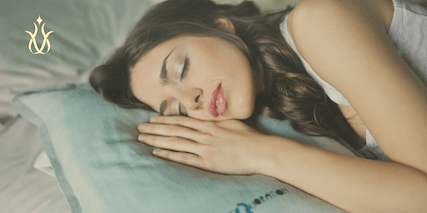
Sleep and Rejuvenation: A Vital Connection
The significance of sleep for our well-being cannot be overstated. Regrettably, its importance is often underrated in our fast-paced lives. Therefore, we must highlight the role of quality sleep in rejuvenation, relaxation, and overall health.
The Essential Role of Sleep in Rejuvenation
Sleep is an integral part of our daily routine. It’s not just about ‘switching off’ for a few hours. Rather, it’s a productive period during which crucial restoration and rejuvenation processes occur.
Our bodies undergo cell repair and regeneration, muscle recovery, and brain refreshment during sleep. Furthermore, our mind and body’s ability to manage stress and maintain equilibrium relies heavily on quality sleep. Simply put, good sleep is the foundation of rejuvenation. It’s often the best medicine for acute and chronic stress.
Mastering Sleep Hygiene for Better Rest
Sleep hygiene refers to practices and habits that promote good sleep quality and full daytime alertness. These include keeping a consistent sleep schedule, making your sleep environment dark, quiet, and cool, and avoiding stimulating substances like caffeine and nicotine close to bedtime.
Other key practices include:
Limiting daytime naps.
Incorporating physical activity into your daily routine.
Managing worries before heading to bed.
The cornerstone of good sleep hygiene is making sleep a priority, not an afterthought.
The Power of Sleep: What Research Tells Us
Multiple studies have linked quality sleep with relaxation and rejuvenation. For instance, a study published in ‘Science Advances’ found that deep sleep helps reduce anxiety levels by reorganising connections in the brain. Another research article in ‘Nature Cell Biology’ uncovered how sleep boosts the activity of cells that repair damaged DNA and rejuvenate the body.
Therefore, the evidence is clear: sound sleep is not a luxury—it’s a necessity. It’s a natural, scientifically proven method of relaxation and rejuvenation. Prioritising good sleep hygiene can substantially improve your health and wellbeing. So, let’s turn off the screens, darken those rooms, and dive into a world of rejuvenating relaxation every night.
The Role of Diet in Relaxation and Rejuvenation: A Delicious Path to Wellbeing
Food is not just about survival or pleasure. It’s about nourishment, well-being, and, yes, even relaxation and rejuvenation. Understanding the role of a balanced diet can completely transform your approach to food, viewing it as a source of energy and a tool for relaxation and rejuvenation.
A Balanced Diet: The Keystone of Relaxation and Rejuvenation
Just as a car needs the right fuel to run smoothly, your body needs a balanced diet to function optimally. Eating various nutrient-dense foods helps keep our body’s systems balanced, supports our mental well-being, and promotes relaxation and rejuvenation.
A balanced diet rich in fruits, vegetables, lean proteins, whole grains, and healthy fats provides the broad array of nutrients our body needs. These nutrients – including vitamins, minerals, antioxidants, fibre, and essential fatty acids – contribute to everything from heart health to brain function, mood regulation, and stress management.
Nutrient-rich Foods: Nature’s Relaxation Aids
Certain foods are primarily known for their relaxation benefits. For example, fatty fish like salmon and mackerel are rich in omega-3 fatty acids linked to reduced stress and anxiety levels. In addition, magnesium-rich foods such as leafy green vegetables, nuts, and seeds can also support relaxation by promoting healthy brain function.
Foods rich in complex carbohydrates, like whole grains and legumes, can boost serotonin production. This neurotransmitter promotes feelings of calm and well-being. Meanwhile, antioxidant-rich berries and dark chocolate can combat oxidative stress, contributing to rejuvenation.
What Does the Research Say?
Numerous studies attest to the power of a balanced diet in promoting relaxation and rejuvenation. For example, a study in the ‘Journal of Psychopharmacology’ found that dietary interventions can significantly reduce anxiety symptoms.
Moreover, research published in ‘Antioxidants & Redox Signaling’ highlighted the role of dietary antioxidants in combating oxidative stress and promoting cellular rejuvenation.
A balanced and healthy diet can be a potent ally in your quest for relaxation and rejuvenation. Eating diverse nutrient-rich foods contributes to better physical health and supports mental well-being. So, let’s embrace the power of food and take another delicious step towards a relaxed and rejuvenated life.
Exercises and Physical Activity for Relaxation: Get Moving for a Rejuvenated You
Regular physical activity is one of the best things you can do for your health. But did you know it’s also a powerful relaxation tool? Here, we explore the connection between exercise and relaxation, looking at rejuvenation and the evidence-backed benefits of staying active.
A Variety of Exercises for Relaxation
A broad spectrum of exercises can help us relax and rejuvenate. These range from calming activities like yoga and tai chi, which synchronise body and mind, to more vigorous exercises like jogging or cycling that get your heart pumping. Swimming is another excellent choice, as rhythmic strokes and breathing can have a meditative effect. Alternatively, you could try exercises like Pilates, focusing on core strength, flexibility, and mindful movement.
Physical Activity: The Rejuvenation Link
Exercise isn’t just about burning calories or building muscle. It’s vital to maintaining overall well-being, including mental health and relaxation. For example, physical activity stimulates the production of endorphins, the body’s natural mood elevators, leading to what’s often called a ‘runner’s high.’
Moreover, regular physical activity can help regulate your sleep patterns, leading to deeper, more restful sleep. Better sleep means more energy and better rejuvenation, as it’s during sleep that the body repairs and renews cells.
The Research Behind Exercise and Relaxation
There’s an abundance of scientific evidence linking exercise with relaxation and rejuvenation. For example, a study published in ‘Frontiers in Psychology’ found that individuals who exercise regularly have better stress resilience and overall mental health.
Similarly, a review in ‘Nature Reviews Neuroscience’ highlighted the rejuvenating effects of exercise on the brain, pointing to enhanced cognitive function and mood regulation.
So, as you can see, exercises aren’t just about physical health. They are an integral part of relaxation and rejuvenation strategies. So, whether it’s a brisk walk in the park or a yoga session, find an activity you enjoy and make it a part of your routine. Your body and mind will thank you!
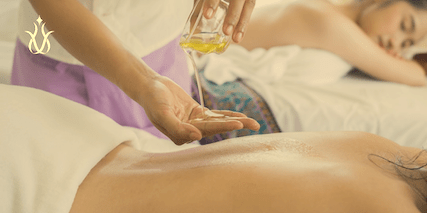
Spa Treatments for Relaxation: A Gateway to Rejuvenation
Who wouldn’t love to escape into a world of calm, away from life’s incessant buzz, even for a while? The tranquil haven of a spa does precisely that, offering an array of treatments that soothe the mind and revitalise the body.
Popular Spa Treatments for Relaxation: A Brief Overview
The world of spa treatments is as diverse as it is delightful. The ever-popular massage comes in various forms, such as Swedish, hot stone, or deep tissue, each tailored to relax the muscles, alleviate tension, and enhance blood circulation.
Facials are another cherished spa ritual designed to cleanse, hydrate, and replenish the skin. Body scrubs exfoliate, detoxify, and moisturise the skin, while body wraps typically use natural materials like clay or seaweed to invigorate and rejuvenate the skin.
The Rejuvenating Power of Spa Treatments
Relaxation and rejuvenation go hand in hand at the spa. The body’s natural healing mechanisms kick into gear as therapists apply their skilled touch. Massages, for instance, ease tension and increase circulation, helping your body deliver essential nutrients more efficiently.
Facials and body treatments like scrubs and wraps purify the skin, removing dead skin cells and impurities and resulting in a refreshed, glowing complexion. But the benefits go beyond the skin. A spa’s gentle, nurturing environment fosters a sense of tranquillity, encouraging a mental reset.
Backed By Science: Spa Treatments and Their Benefits
The wellness benefits of spa treatments are more than just perceived – they are supported by science. A study published in ‘The Journal of Alternative and Complementary Medicine’ found that spa therapy significantly improves stress response and overall well-being.
Meanwhile, research in ‘The International Journal of Therapeutic Massage & Bodywork’ underlined that massage therapy could reduce cortisol levels, our body’s primary stress hormone, while increasing endorphin levels, the ‘feel-good’ hormones.
Indulging in spa treatment is more than just pampering oneself. It is a worthwhile investment in your physical and mental health. So, why wait? Step into a spa, and let relaxation and rejuvenation wash over you.
Consistency: The Key to Long-Lasting Rejuvenation
Consistency is key to garnering the full benefits of all these relaxation techniques. It’s not about making monumental changes all at once but about making small, sustainable adjustments that can become part of your everyday life.
Studies, such as one published in the ‘Journal of Clinical Psychology’, have shown that consistency in practising relaxation techniques can improve mental and physical health over time. In addition, regular practice makes these techniques more effective, as your body becomes better at activating its relaxation response.
Whether setting aside five minutes daily for deep breathing or making a weekly date with the yoga mat, remember that every step counts on the road to relaxation and rejuvenation. It’s about creating a personal wellness ritual that consistently nourishes your body, mind, and spirit.
So, are you ready to commit to consistent practice? Your journey to relaxation and rejuvenation awaits. Embrace these techniques, be patient, and enjoy spending time discovering what works best for you. Remember, it’s your journey at your pace. So, here’s to a more relaxed, rejuvenated you!
Resources:
Perciavalle V et al (2017). The role of deep breathing on stress. Available at: https://pubmed.ncbi.nlm.nih.gov/27995346/
Kim HS et al (2018). Effects of Relaxation Therapy on Anxiety Disorders: A Systematic Review and Meta-analysis. Available at: https://pubmed.ncbi.nlm.nih.gov/29579524/
Tang YY et al (2015). The neuroscience of mindfulness meditation. Available at: https://www.nature.com/articles/nrn3916
Harvard Medical School. (2011). Relaxation techniques: Breath control helps quell errant stress response. Available at: https://www.health.harvard.edu/mind-and-mood/relaxation-techniques-breath-control-helps-quell-errant-stress-response
Mayo Clinic. (2021). Relaxation techniques: Try these steps to reduce stress. Mayo Clinic. Available at: https://www.mayoclinic.org/healthy-lifestyle/stress-management/in-depth/relaxation-technique/art-20045368
Stress Management Society. (2019). The 10-step stress solution: Relax, refresh, revitalise. Stress Management Society. Available at: https://www.stress.org.uk/
National Center for Complementary and Integrative Health (NCCIH). (2019). Relaxation Techniques for Health. U.S. Department of Health & Human Services. Available at: https://www.nccih.nih.gov/health/relaxation-techniques-for-health
Disclaimer: This article is for informational purposes only and should not replace professional medical advice. If you have specific concerns or medical conditions, it is recommended to consult with a healthcare professional for personalised guidance and support.
Related Topics:
The Best Meditation Retreats in The World
Wellness Escapes: The Best Luxury Wellness Retreats in the World
Top 10 Health Spas for Ultimate Wellness
